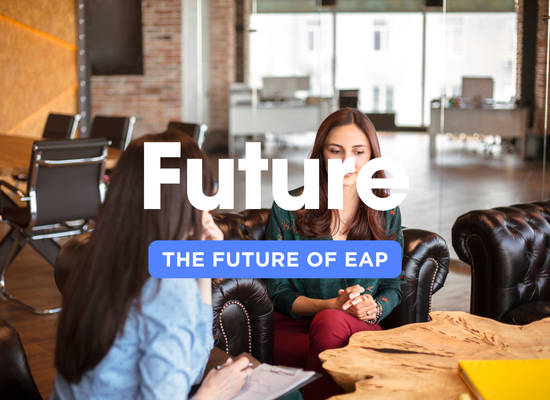The Future of EAP

Employee Assistance Programs (EAPs) have come a long way since their inception in the 1970s. Initially designed to address alcoholism and substance abuse in the workplace, EAPs have evolved to become a vital support system for employees’ overall well-being. Today, EAPs encompass a broad range of services, including mental health support, financial counseling, and work-life balance resources.
As the modern workplace continues to shift and adapt to changing demographics, technologies, and societal trends, EAPs must also innovate to meet the evolving needs of employees. In this 5-part series, we will explore the future of EAPs, including emerging trends, technological advancements, and the expanding role of EAPs in supporting employee well-being.
Emerging Trends in EAPs
Several emerging trends are shaping the future of EAPs:
- Digitalization and Telehealth: Online counseling platforms and mobile apps are becoming increasingly popular, offering convenient and accessible support for employees.
- Personalized Support: EAPs are moving towards personalized support, using data analytics and AI to tailor services to individual employees’ needs.
- Holistic Well-being: EAPs are expanding beyond mental health to address physical, financial, and social well-being, recognizing the interconnectedness of employee health.
- Diversity, Equity, and Inclusion: EAPs are adapting to support diverse employee populations, including LGBTQ+ individuals, people of color, and employees with disabilities.
- Manager Training and Support: EAPs are recognizing the critical role managers play in supporting employee well-being and are offering training and resources to help them effectively support their teams.
These trends reflect the evolving needs of the modern workforce and the importance of EAPs in supporting employee well-being.
The Impact of Technology on EAPs
Technology is revolutionizing the delivery and accessibility of EAP services:
- Online Counseling Platforms: Secure video conferencing and messaging platforms are enabling employees to connect with counselors remotely.
- Mobile Apps: EAP apps are providing employees with instant access to support, resources, and tools.
- Artificial Intelligence (AI) Chatbots: AI-powered chatbots are offering immediate support and guidance, helping employees navigate EAP services.
- Virtual Reality (VR) Therapy: Immersive VR experiences are being used to treat mental health conditions, such as anxiety disorders.
- Data Analytics: Advanced data analytics are helping EAPs track engagement, measure outcomes, and identify trends to improve services.
Technology is increasing accessibility, convenience, and efficiency, making EAP services more appealing to employees and employers alike.
The Expanding Role of EAPs in Supporting Employee Well-being
EAPs are evolving to address a broader range of employee needs, including:
- Financial Well-being: EAPs are offering financial counseling, planning, and education to help employees manage debt, save, and invest.
- Physical Health: EAPs are incorporating physical health services, such as fitness classes, nutrition counseling, and chronic disease management.
- Social Connections: EAPs are fostering social connections through employee resource groups, mentorship programs, and community events.
- Career Development: EAPs are providing career coaching, resume building, and job search support to help employees advance in their careers.
- Work-Life Balance: EAPs are offering resources and support to help employees manage work-life balance, including childcare and eldercare resources.
By expanding their scope, EAPs are becoming a one-stop-shop for employee support, recognizing that employee well-being is essential to overall health and productivity.
The Future of EAPs – Predictions and Recommendations
As EAPs continue to evolve, here are some predictions and recommendations for the future:
Predictions:
- Increased focus on mental health: EAPs will prioritize mental health support, recognizing its impact on overall well-being.
- Integration with wearable technology: EAPs will leverage wearable data to provide personalized support and encourage healthy habits.
- Expansion into new industries: EAPs will become more prevalent in non-traditional industries, such as hospitality and retail.
- Greater emphasis on diversity and inclusion: EAPs will prioritize cultural competence and support for underrepresented groups.
- Artificial intelligence-powered support: EAPs will incorporate AI-driven tools for support and guidance.
Recommendations:
- Employers: Invest in EAPs: Recognize the value of EAPs in supporting employee well-being and productivity.
- EAP providers: Stay innovative: Continuously adapt to emerging trends and technologies.
- Employees: Utilize EAP resources: Take advantage of available support to prioritize your well-being.
By working together, we can create a future where EAPs are a cornerstone of employee support, fostering a culture of well-being and inclusivity.
EAPs have come a long way, and their evolution is set to continue. By understanding the trends, challenges, and opportunities facing EAPs, we can work together to create a brighter future for employee well-being.